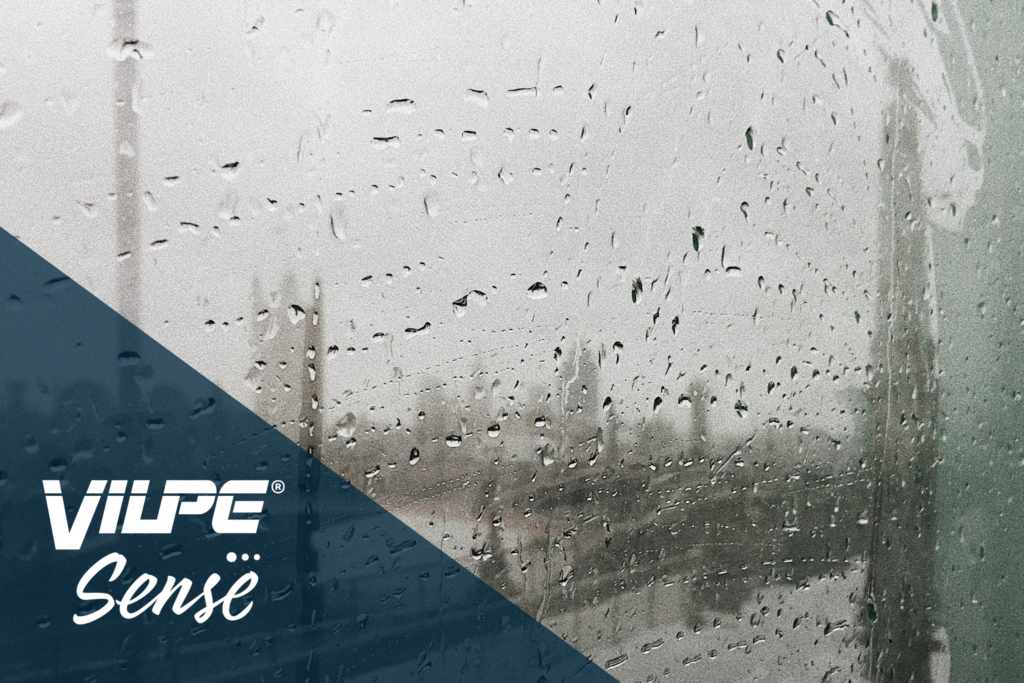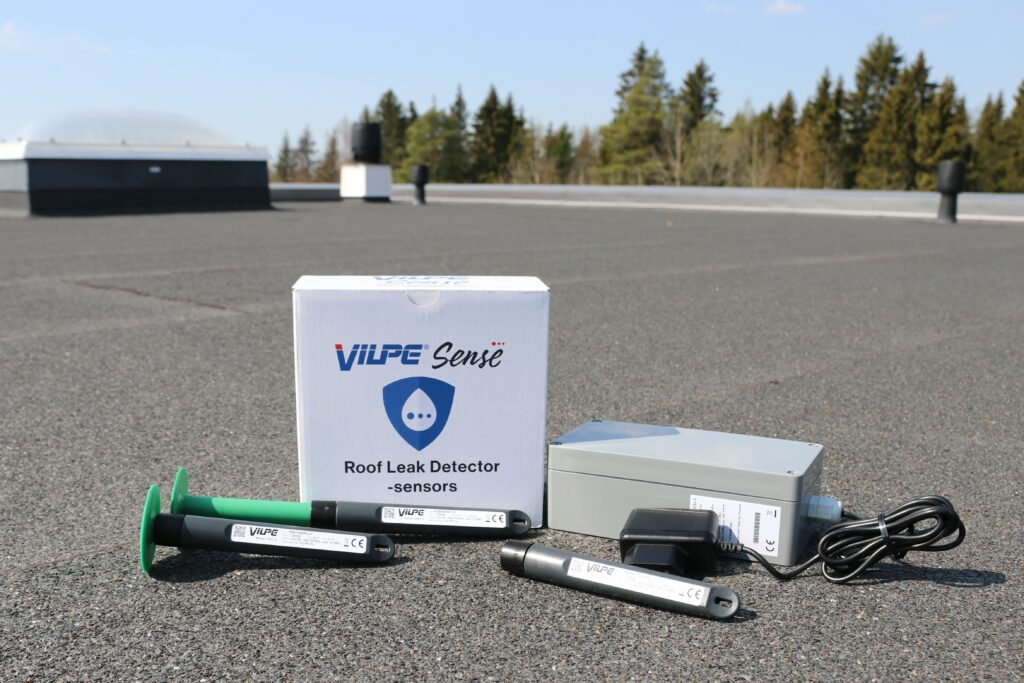Why Moisture Damages on Roofs Are on the Rise

Moisture-related problems on roofs have consistently been identified as the most common building issue in numerous studies (Bunkholt et al., 2021; Gullbrekken et al., 2016; Mills, Love, and Williams, 2009). Detecting and mitigating moisture risks is therefore a critical concern in the construction industry.
Addressing topics related to roof breaches and moisture damage is complicated by several factors.
- Most moisture-related damages are not covered by insurance, comprehensive data on these issues are seldom collected, making it difficult to fully assess the scale of moisture damage and understand their underlying causes.
- Regional differences in climate, construction practices, and building standards affect the prevalence of specific roofing defects. A defect common in one region may be rare in another due to variations in weather conditions, materials, and building techniques.
- Researchers often use different definitions for terms like building defects, quality deviations, breaches, and roof failures, further complicating comparisons across studies.
Despite these challenges, examining existing research offers valuable insights into common vulnerabilities and effective prevention strategies. In this article, a broad definition is adopted to consolidate current knowledge on moisture-related roof issues, exploring their causes, timeframes for manifestation, and most importantly, how to reduce the risk of moisture damage.
Moisture problems affect even the youngest roofs
Moisture-related problems are among the most common failures affecting roofs, as multiple studies have shown. Studies on building defects consistently indicate that roof-related issues constitute the largest share of all building defects (cf. Boverket, 2018; Mills, Love, and Williams, 2009). For instance, Bunkholt et al. (2021) found that 70% of defects were located in the building envelope (walls or roof), and Gullbrekken et al. (2016) reported that 22% of all building defects occurred on roofs, making roofs the most significant defect category. Moreover, moisture has been identified as the leading cause of building failures, with studies attributing 70-75% of issues to moisture (Boverket, 2018; Bunkholt et al., 2021). On roofs, this percentage is likely even higher—Gullbrekken et al. (2016) found that only 9% of roof defects were unrelated to moisture.
Furthermore, research suggests that most moisture problems on roofs stem from building defects, and these tend to manifest early in a building’s operational life. Baily and Bradford (2005) analyzed US Army roof data, concluding that 75% of performance issues stemmed from factors other than natural degradation. Bunkholt et al. (2021) found that 13% of defects were reported within the first year, and 50% had appeared within the first five years of a building’s life. Additionally, Mills, Love, and Williams (2009) discovered that 1 in 8 new residential buildings in Victoria, Australia, had defects, with leaking roofs being the most common issue.
Collectively, these findings indicate that human error—manifesting as construction defects—is the predominant cause of moisture problems on roofs, which often emerge early in the life of new buildings. This highlights the importance of improving construction practices and implementing rigorous control measures to prevent moisture-related issues from the outset.
Moisture problems on roofs are on the rise
Bunkholt and colleagues (2021) analyzed Norwegian data spanning several decades, offering a unique opportunity to track moisture problems over time. Their findings reveal two significant trends.
- Moisture damage on roofs has increased from 22% of all defects (1993-2002) to 32% (2017-2020). Similarly, moisture issues on unventilated compact roofs rose from 19% to 33% over the same period.
- The nature of these defects has changed: damages caused by precipitation have doubled, while problems stemming from humid indoor air have been halved.
Combined, these trends highlight that roofs are becoming increasingly susceptible to climate-related factors, particularly precipitation. The doubling of damage caused by rain and the rise in moisture issues on unventilated compact roofs emphasize a growing vulnerability that surpasses problems from indoor humidity. This underscores the need for the construction industry to adapt building practices and roofing designs to better protect against precipitation-induced moisture damage in the face of changing climate conditions.
Mitigating moisture problems through better building practices and smart maintenance
Most moisture problems arise from construction defects, making improved building practices crucial for prevention. Early quality control, better project timelines, and collaborative stakeholder efforts have been shown to reduce defects (Schultz et al., 2015). However, due to the complexity of construction projects and inevitable human error, continuous improvement alone is not enough. Timely interventions and systematic maintenance play a vital role in extending roof lifespans (Bailey and Bradford, 2005).

Smart Maintenance with new technology
Traditional inspections may miss hidden issues, but advanced technologies like IoT-based sensors can detect moisture buildup early. The VILPE Sense product line offers real-time monitoring with sensors that measure humidity and temperature, enabling early intervention before small issues escalate into costly repairs.
The VILPE Sense family includes leak detectors for identifying leaks and problems caused by precipitation. It also features a humidity control system that provides demand-based ventilation, preventing moisture buildup from vapor barrier leaks, construction-phase moisture, or inadequate ventilation. This system ensures that roofs are ventilated only when necessary, maintaining optimal conditions. By combining leak detection and humidity control, VILPE Sense enhances roof maintenance, preserves structural integrity, and offers long-term value for building owners.
Conclusion: Moving towards smarter roof maintenance
In summary, the frequency of roof defects and the overwhelming prevalence of moisture-related issues underscore the need for proactive solutions. The rise in moisture damage, particularly due to precipitation, highlights the growing vulnerability of roofs to climate change.
To mitigate these risks, a combination of improved building practices, advanced maintenance strategies, and the adoption of smart technologies is essential. Future research and updates to building regulations should focus on addressing moisture risks early in a building’s life and ensuring the longevity of roofing structures. Embracing these advancements will help protect both new and existing buildings from the costly consequences of moisture damage.
References:
Bailey, D. M., & Bradford, D. (2005). Membrane and flashing defects in low-slope roofing: Causes and effects on performance. Journal of performance of constructed facilities, 19(3), 234-243.
Boverket (2018:36). Kartläggning av fel, brister och skador inom byggsektorn.
Bunkholt, N. S., Gullbrekken, L., Time, B., & Kvande, T. (2021, November). Process induced building defects in Norway–development and climate risks. In Journal of Physics: Conference Series (Vol. 2069, No. 1, p. 012040). IOP Publishing.
Gullbrekken, L., Kvande, T., Jelle, B. P., & Time, B. (2016). Norwegian pitched roof defects. Buildings, 6(2), 24.
Mills, A., Love, P. E. D., & Williams, P. (2009). Defect costs in residential construction. Journal of Construction Engineering and Management, 135(1), 12–16. https://doi.org/10.1061/(ASCE)0733-9364(2009)135:1(12)
Schultz, C. M., & Love, P. E. D. (2015). Early quality control and project timelines: Reducing defects through collaborative stakeholder efforts. International Journal of Managing Projects in Business, 8(4), 680–699. https://doi.org/10.1108/IJMPB-12-2014-0087
